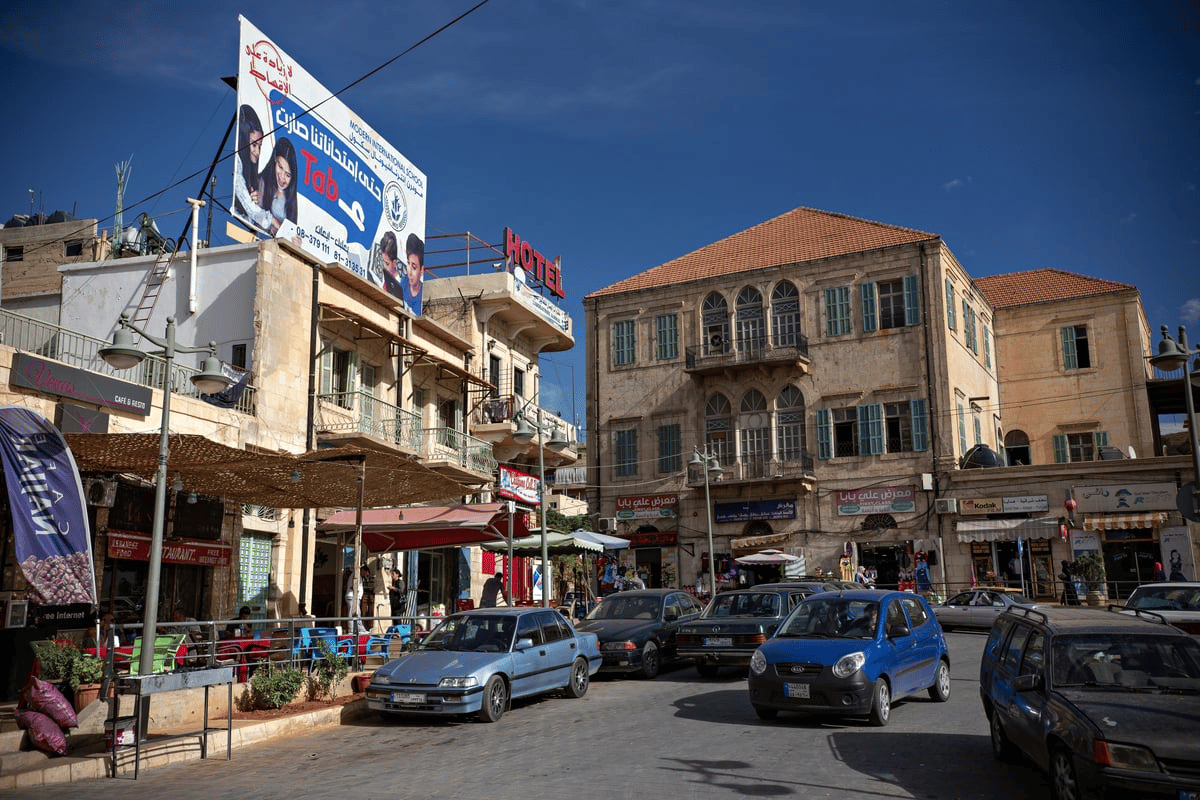Baalbek - the northern area of Biblical Israel
Baalbek in the crosshairs: A city of war and wonders
Exploring the dual identity of Baalbek as a battlefield and a treasure trove of archaeological riches.

These days, Baalbek is under Israeli air force attacks as part of the IDF's destruction of Hezbollah terrorists and infrastructure in Lebanon. The city however, located in the Bekaa Valley and serving as the northern border of the Biblical Land of Israel, is a site of exceptional historical and archaeological importance.
Baalbek, also known as Heliopolis ("City of the Sun") in the Greco-Roman period and the biblical Baal Gad, contains three impressive temple complexes built from the first century CE.
The name Gad, which means 'luck', appears in the Bible in a variety of contexts - from the name of the city of Migdal Gad to proper names such as Gadi, Gadiel and Gadiah. In the Book of Joshua, the verse "The Reuveni and the Gadi, took their inheritance" (Joshua 13:8), and its geographical location is described: "And the borderline land, and all the Lebanon east of the sun, from Baal Gad, under Mount Hermon--until Levo Hamat" (Joshua 13:5), which identifies Baal Gad near Levo Hamat in the northern land of the Canaanites on Mount Hermon.
The main complex, the Temple of Jupiter, is the largest there, and next to it stand the temples of Bacchus and Venus. An inscription found there, dated to 60 AD, indicates a connection to the reign of Emperor Nero.
The site is famous for its megalithic stones, which are larger than those on the Temple Mount in Jerusalem.
The Mishnah (Tithes 5:8) discusses the status of special and spicy garlic coming from the city, called "garlic baal-Bekhi," which is exempt from tithes. According to the Tosefta and the Yerushalmi, it is characterized by a single row surrounding the column and is not built of scabs (a kind of garlic pearl).
A Jewish community existed in Baal Bak, and the sources show that already in the days of Rabbi Saadia Gaon in the 10th century, and some of his yeshiva students came from it. Benjamin of Tudela, who visited the city in 1175, reported that the place served as a resort for the Jews of Damascus, as well as for the Jews of Ali and Hamdon.
Rabbi Moshe Elsheikh tells of a number of local Jews, as well as two of them who immigrated to Damascus and were killed there. In 1858, Moshe Reischer, a scholar of the Land of Israel from Jerusalem, reported on a number of Sephardic Jews living there.
In 1751, the publication of an illustrated book by two French nobles, entitled "The Ruins of Balbec Otherwise Heliopolis in Coelesyria", made Baalbeck a significant source of inspiration in European architecture of the 18th and 19th centuries.
Today, the ancient site lies in the heart of the clash zone, and among the casualties in the area was Emmanuel Moreno HY"D.
The rich history of the place is now intermingled with the complex security reality of the region, with the name Bekhi - crying - taking on extra meaning in the current conflict. Our enemies in Lebanon are crying now, while we are enjoying great successes, with God's help, in the Lebanese region.
* Kikar Shabbat contributed to this article.